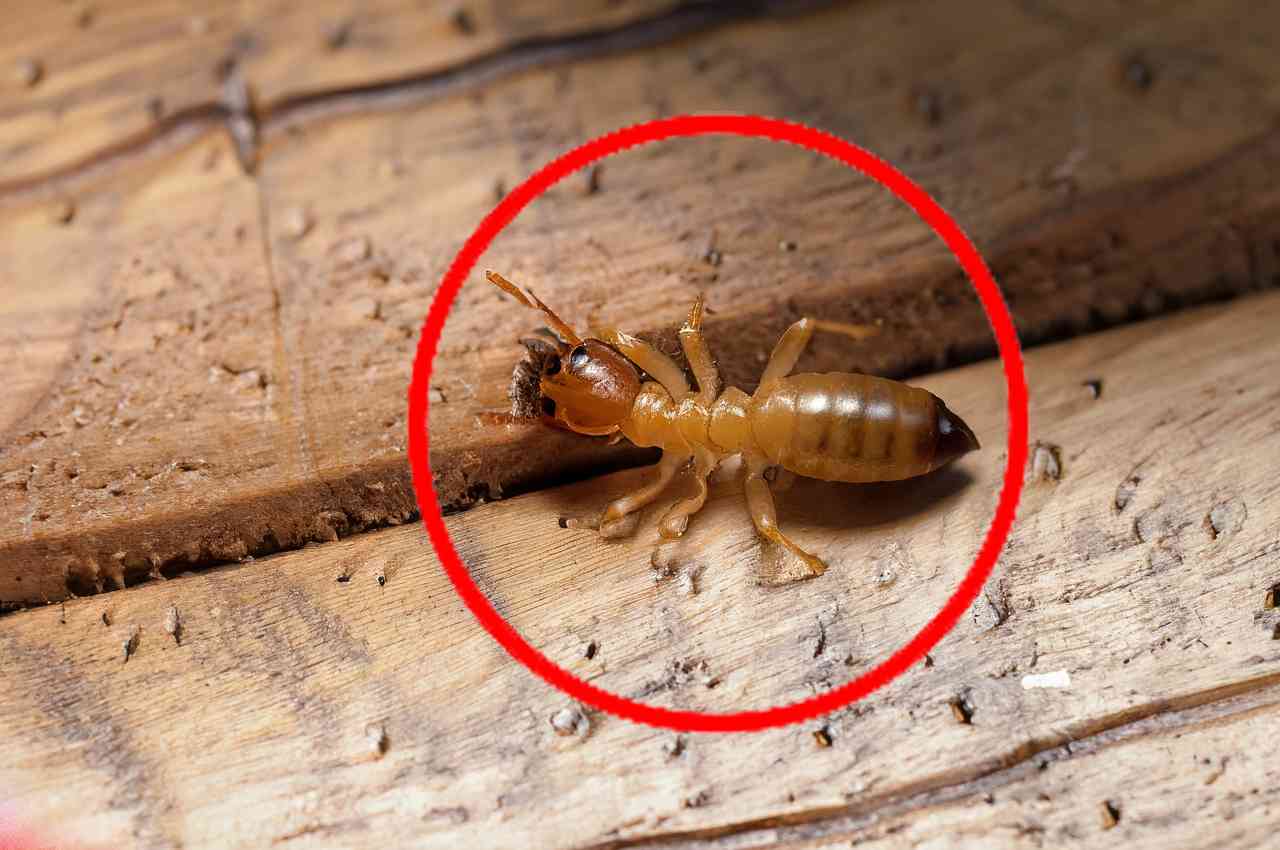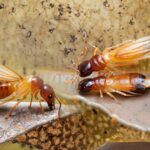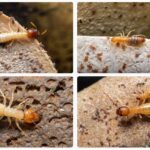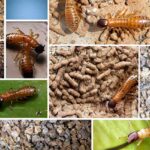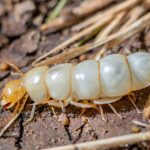What Termite Eats The Most Wood? If we could identify the termite that has a voracious taste for wood, harm might be avoided more easily. Termites, those silent destroyers of wooden structures, possess varying appetites for their favorite fare–wood. Although these small insects may seem unnoticeable, their insatiable appetite for cellulose-rich materials may cause serious damage to buildings, furniture, and even trees. There is a hierarchy in the wood-eating propensities of the various termite species.
Read more to explore the several termite species that stand out for their insatiable hunger for wood, illuminating the nuances of their behavior, habitats, and the possible hazards to our prized wooden possessions.
What termite eats the most wood?
The Formosan subterranean termite is the most wood-eating species of the over 3,000 termite species that exist globally. These tiny insects eat cellulose despite their small size. An established termite colony with millions of workers may consume over a pound of wood daily. If left untreated, Formosan termites destroy house frames, flooring, furniture, trees, and timber utility poles. Originally from East Asia, these exotic termites infiltrated the United States last century through transported goods and have spread across warm southern regions. Formosan termites are cellulose consumption champions due to their enormous colonies and wood-eating ability.
| Termite Species | Wood Type | Moisture Requirements |
|---|---|---|
| Subterranean termites | Any type of wood | Moisture-dependent |
| Drywood termites | Dry wood | Moisture-independent |
| Dampwood termites | Moist, decaying wood | Moisture-dependent |
Understanding Termite Varieties: Silent Destroyers of Structures
Termites are sociable wood-eating insects. They may seriously harm houses, companies, and other buildings, and they are everywhere globally. Termites come in various forms, but the two most prevalent in the US are dry wood and subterranean termites.
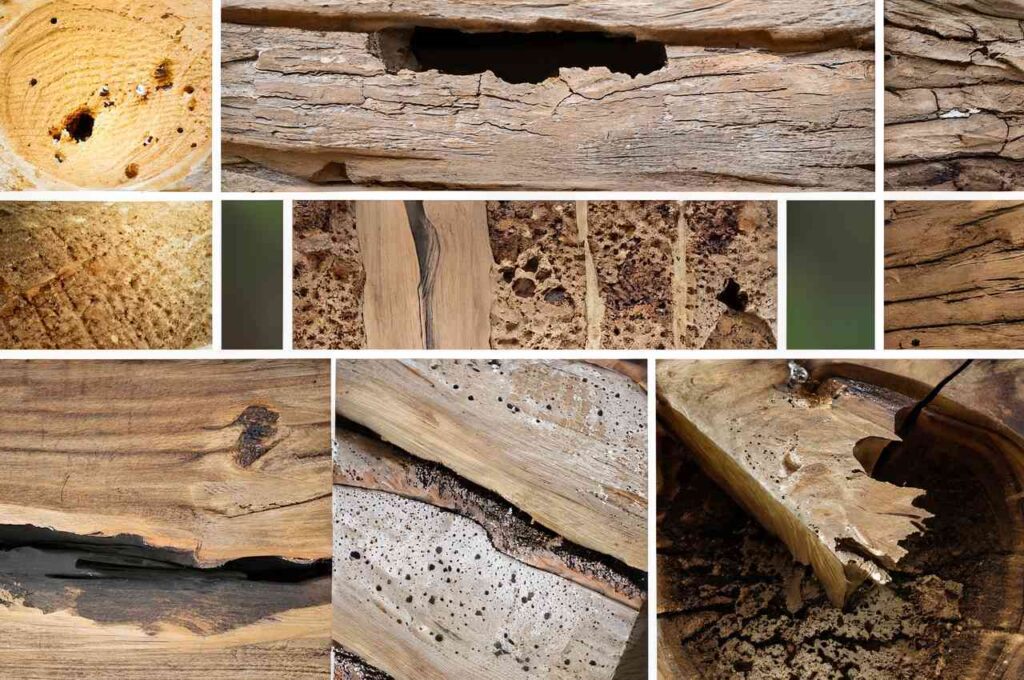
| Aspect | Subterranean Termites | Drywood Termites |
|---|---|---|
| Habitat & Behavior | Live in colonies underground; build mud tubes for travel | Live in moist wood; don't require contact with the ground |
| Wood Consumption | Can eat through any type of wood, including pressure-treated wood | Consume moist wood, such as furniture, attics, and walls |
| Challenges | Highly destructive; cause significant damage | Difficult to control due to habitat preference and mobility |
| Moisture Dependency | Require moisture for survival | Attracted to moisture; likely to infest areas with water issues |
Importance of Understanding Which Type of Termite Causes the Most Damage
To take precautions against an infestation, it is important to identify the species of termite that does the most harm in your region. The southern United States has a higher prevalence of subterranean termites, while the western United States has a higher prevalence of dry wood termites. . If you suspect termites, call a reliable pest treatment company. They will be able to determine what kind of termite you have and suggest the most effective line of action.
Subterranean Termites and Their Never-Ending Hunger
The most damaging kind of termite in North America is an underground one. Although they may be found throughout the country, the southern states are the most prevalent. These termites construct mud tunnels to reach food sources while they reside in underground colonies. They may eat any kind of wood, even pressure-treated wood.
A single underground termite colony might include up to one million workers. Due to these colonies, homes, companies, and other buildings may suffer serious damage. Wood may be consumed by termites at a rate of 15 pounds (6.8 kilograms) each week.
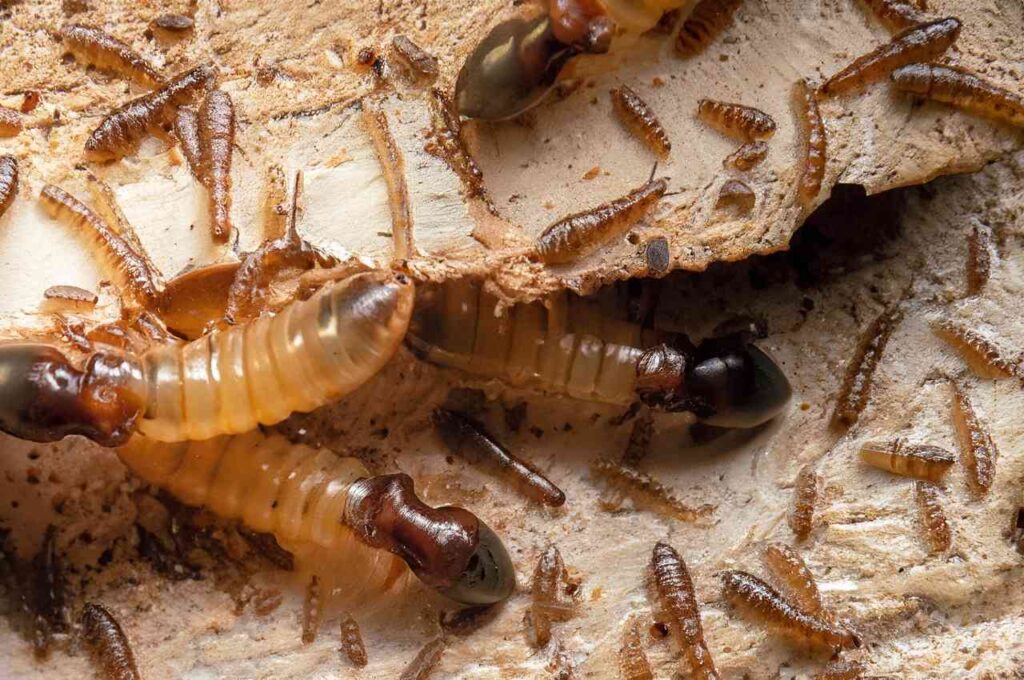
Termites eat cellulose, which makes up the majority of wood. For some insects, cellulose is a complex carbohydrate that is challenging to digest. However, termites and the bacteria in their stomach that aid in the breakdown of cellulose have a symbiotic connection. By doing this, termites may consume wood and get the nutrients they need to exist.
Termites also utilize the cellulose they eat to construct their nests. Termite nests are constructed from wood fibers and dirt. These nests may be discovered in buildings, trees, or even underground. Termite nests may grow to enormous sizes and even weigh several tons.
Subterranean termites seriously threaten property destruction. You should contact a reputable pest treatment firm when you detect a termite infestation. They will be able to determine what kind of termite you have and suggest the most effective line of action.
Formosan Termites: The Silent Menace
The most damaging species of termites in the world are Formosan termites. Although they originated in Southeast Asia, they have now spread to other countries, including the United States. Formosan termites may seriously harm houses, businesses, and other buildings because they are voracious wood eaters.
Colonies of Formosan termites may expand quickly. A colony may include up to 1 million workers. These colonies may swiftly consume large quantities of wood. Formosan termites are challenging to manage because they may travel great distances.
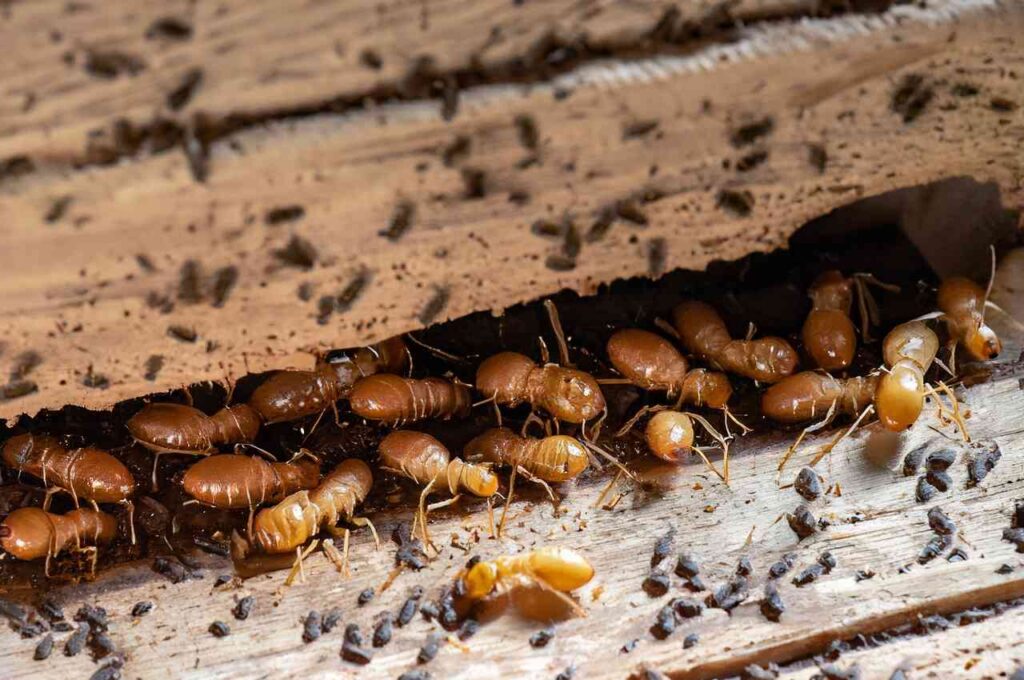
Formosan termite infestation symptoms might first be imperceptible. But there are a few things to watch out for:
| Signs of Formosan Termite Infestation |
|---|
| Swarmers |
| · Typically in the warmer months of spring and summer, Formosan termites swarm. |
| · Termites with wings that swarm aim to create new colonies. |
| Mud Tubes |
| · Mud tubes built by Formosan termites serve as routes from their nests to food sources. |
| · These tubes may be found on a variety of building components, such as walls and foundations. |
| Damaged Wood |
| • Formosan termites consume wood, causing the wood to develop hollowed-out patches as a consequence. |
| Frass |
| · The waste that Formosan termites leave behind is called frass. |
| · It resembles fine sawdust and is often seen around regions where termites are active. |
Call a reputable pest treatment business right away if you think you may have a Formosan termite infestation. If Formosan termites are not treated immediately, they might seriously harm your house.
Drywood Termites: Experts at Weakening Structures
Termites that live on dry wood do not need moisture to survive. They may inhabit dry wood, including furniture, attics, and spaces between walls. Since they don’t need moisture to thrive, they are more challenging to eradicate than subterranean termites.
Drywood termites hollow out wood by consuming it from the inside out. Additionally, they make wood tunnels, which may undermine buildings.
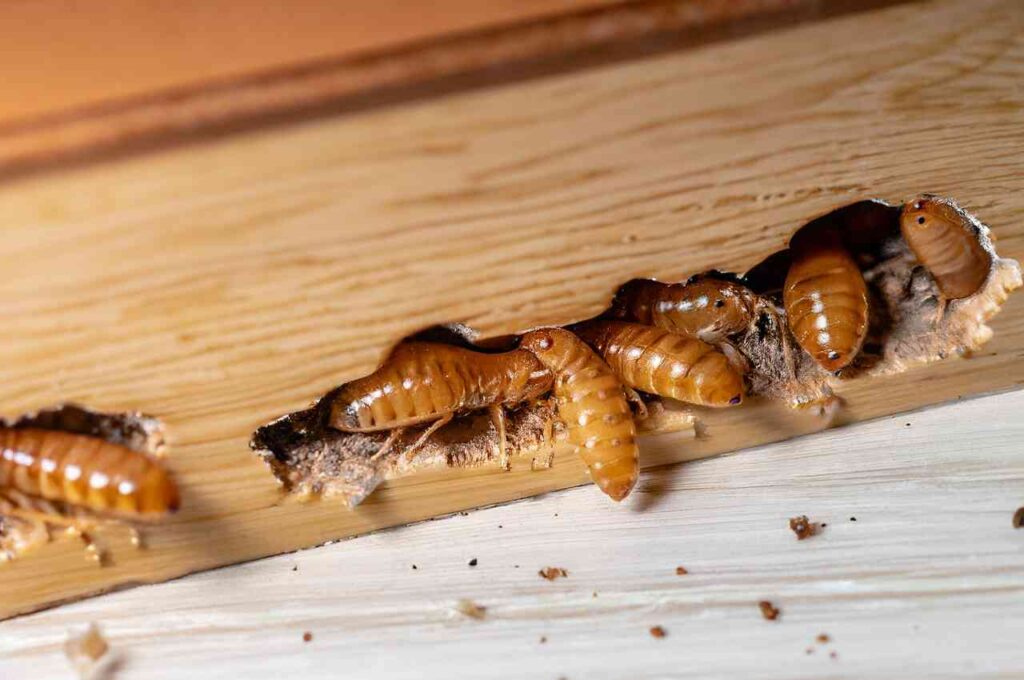
Initial indications of a dry wood termite infestation might be invisible. But there are a few things to watch out for:
| Signs of Drywood Termite Infestation |
|---|
| Fine, Sawdust-like Material (Frass) |
| • Frass is often left behind by drywood termites when they push it out of their galleries around windows and doors. |
| Hollowed-Out Areas |
| • As drywood termites devour wood from the inside out, leaving thin layers on the surface intact, infested wood may have hollowed-out patches. |
| Mud Tubes on Walls or Ceilings |
| • Drywood termites may produce little mud tubes on walls or ceilings, however this is less frequent than in other termite species. |
| Swarmers |
| • In the spring and summer, flying termites known as swarmers fly about looking to establish new colonies. |
Contact a reputable pest treatment business when you detect a dry wood termite infestation. If dry wood termites are not treated immediately, they might seriously harm your house.
Dampwood Termites: Thriving in Moist Environments
The termite species known as damp wood termites favors wet, rotting wood. They thrive in hot, humid environments and may seriously harm buildings, patio furniture, and trees.
In contrast to subterranean termites, damp wood termites do not need soil contact to survive. They may get the necessary moisture from wet wood. They are thus more challenging to manage than subterranean termites.
Termites that feed on damp wood may worsen moisture issues already present in buildings. Gnawing on wood may cause moisture issues by letting water soak in.
Decks, fences, and gazebos are a few examples of outdoor timber constructions that damp wood termites may harm. Additionally, they could harm trees, which might cause structural issues.

A damp wood termite infestation may not initially show any symptoms. But there are a few things to watch out for:
| Signs of Dampwood Termite Infestation |
|---|
| Soft, Wet Wood |
| • Because they are drawn to damp conditions, dampwood termites usually infest soft, wet wood. |
| Hollowed-Out Areas |
| • Hollowed-out patches may be seen in infested wood because dampwood termites eat the wood from the inside out. |
| Frass (Termite Waste) |
| • Frass, the waste product produced by dampwood termites, may take the form of pellets or granules close to afflicted wood. |
| Mud Tubes (Termite Tunnels) |
| • Although less frequent, dampwood termites may build mud tubes for moisture and protection. |
| Swarmers |
| • In the spring and summer, winged termites known as "swarmers" of dampwood termites swarm in an effort to found new colonies. |
Contact a reputable pest management business when you detect a damp wood termite infestation. If damp wood termites are not treated immediately, they might seriously harm your house or property.
Preventing Termite Damage: Key Strategies
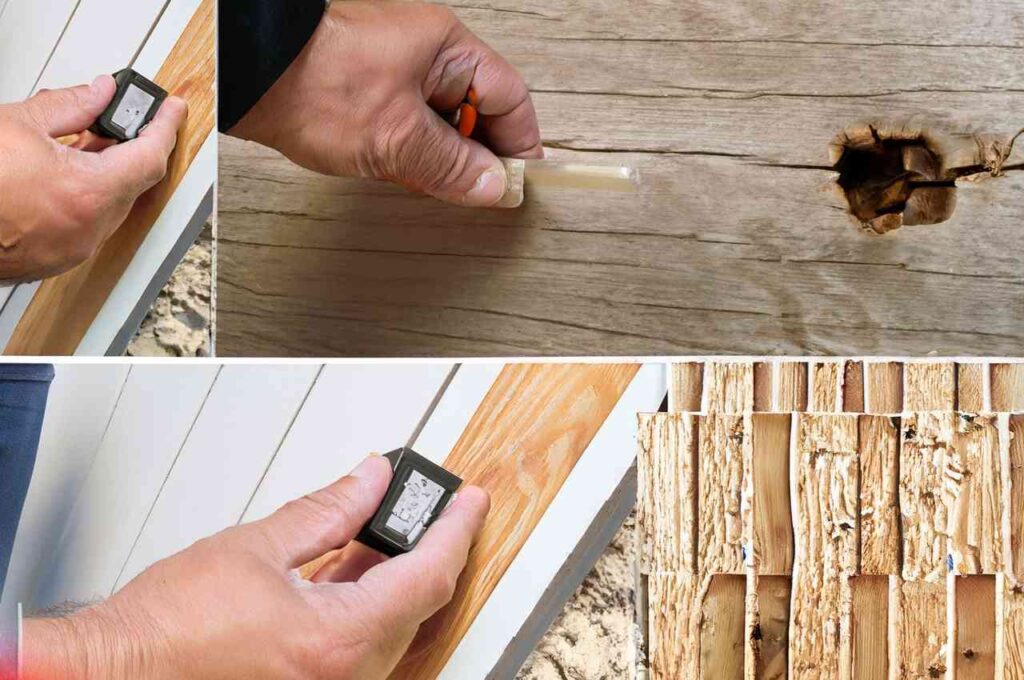
| Tips for Preventing Termite Infestations |
|---|
| Regular Inspections |
| • Perform routine checks for termite damage indicators, such as mud tubes, frass, and hollowed-out wood regions. |
| Address Moisture Issues |
| • Take care of any moisture issues you may have in your house; termites are drawn to wetness. Fix faucet, gutter, and downspout leaks, and make sure there is enough ventilation. |
| Use Pressure-Treated Wood |
| • Pressure-treated wood is preferable for outdoor work since termites find it less appealing. |
| Plant Trees and Shrubs Away from Home |
| • To stop termites from getting close to your home, keep plants and trees at least 10 feet away. |
| Professional Pest Control |
| • If you're worried, think about hiring a pest control expert. A pest control business may examine your house and provide suitable treatment recommendations. |
Conclusion
In conclusion, different termite species display distinctive wood-eating behaviors:
1. Subterranean Termites: These are the most prevalent in the US. They are underground dwellers that use mud tunnels to reach food sources. All sorts of wood, even pressure-treated wood, are edible to them.
2. Drywood Termites: These pests consume wood from the inside out, leaving hollow holes behind. They thrive in dry wood habitats like attics and furniture.
3. Dampwood Termites: These pests attack buildings, furniture, and trees because they like wet, rotting wood and flourish in hot, humid regions.
These several termite species may cause serious harm to dwellings. To protect your belongings:
- Inspections must be conducted often.
- Take care of any moisture problems to reduce termite attraction.
- Pressure-treated wood should be used for outdoor work.
- Grow bushes and trees far from your house.
- Think about hiring an expert for pest control.
Keep in mind that termites are attracted to wetness and dwell in colonies. Home inspections must be performed often. By implementing these preventative measures, you may protect your house from termite damage and the accompanying costly repairs.
Frequently Asked Questions
Which termite species is known for consuming wood extensively?
Subterranean termites devour most wood. They may harm buildings globally. They build mud tunnels to get nourishment in underground colonies. Subterranean termites consume many kinds of wood, including pressure-treated wood, and their propensity to moisture leaves damp dwellings susceptible. A huge colony may destroy buildings in a week by eating 15 pounds of wood. To detect and treat subterranean termites, contact a pest control specialist immediately.
Do different termite species vary in their wood-eating habits?
Different termite species chew wood differently. Underground termites, common in the US, may devour any wood, even pressure-treated wood. In contrast, dry wood termites live in dry wood like furniture, attics, and wall voids. They devour wood inside, hollowing it out. Dampwood termites love warm, humid settings with damp, decomposing wood. Termite species’ wood-eating tendencies need specialized prevention and treatment.
Do subterranean termites consume more wood than others?
Subterranean termites eat more wood than regular termites. The most damaging termite species in North America, they do significant yearly damage. Termites build mud tubes to get food from their underground nests. They devour any wood, even pressure-treated wood, and prefer wet settings. A large underground termite colony may destroy a house by eating 15 pounds of wood every week. In contrast, dry wood and damp wood termites consume wood less intensely. Drywood termites prefer dry wood without moisture, whereas damp wood termites prefer decomposing wood.
Do dry wood termites have a higher appetite for wood than other termites?
The species, environment, and food availability of termites affect their wood appetite. Some research implies that dry wood termites eat more wood than other termites. One research found that dry wood termites devoured 1.5 grams of wood each day, somewhat more than subterranean termites. Another research found that dry wood termites attack damaged wood more than subterranean termites, suggesting more opportunistic eating. However, further study is required to establish whether dry wood termites eat more wood.
Are damp wood termites particularly known for their wood-eating behavior?
Yes, damp wood termites are known for consuming wood. They like damp, decomposing wood in warm, humid regions. Dampwood termites need moisture, whereas dry wood termites may survive without it. They devour other woods, even pressure-treated. Dampwood termites may destroy buildings while being less ravenous than subterranean termites. Since they don’t build mud tubes, they’re harder to find than dry wood termites. If damp wood termites are a problem, visit a pest control specialist for diagnosis and treatment.
Which termite kind most threatens wooden furniture?
Drywood termites are the biggest hazard to wooden furniture. In warm and arid locations, these termites live in dry wood-like furniture, attics, and wall voids. Their unique habit includes eating wood from the inside out, creating hollow areas. Of particular importance, dry wood termites prefer damaged wood. They also resist some insecticides, increasing their hazard.
Do subterranean termites eat pressure-treated wood as well?
Subterranean termites may eat pressure-treated wood, although not preferably. Though vulnerable to termite attack, pressure-treated wood is chemically treated to deter termites. Pressure-treated wood against termites relies on chemical kind, treatment depth, and wood age. Pressure-treated wood may lose efficacy with time, and not all products provide the same protection. Choose pressure-treated wood with greater chemical concentrations and examine for termite damage.
Can termites be prevented from eating wood?
Several efficient methods may discourage termites from eating wood. Termites may enter via cracks in your home’s foundation and exterior, so maintain them. Check your property for termite mud tubes and frass. The chemicals in pressure-treated wood fight termites, making it ideal for outdoor applications. Trees and bushes should be 10 feet away from your house to keep termites out. Avoid wood mulch near your property since it invites termites. Use stone or gravel mulch. Finally, pest control professionals should perform frequent termite inspections to resolve infestations quickly.
Do termites prefer specific woods?
Termites prefer specific woods for varied reasons. Termites need moisture to survive. Thus they prefer damp wood. Hardwoods like oak and maple have more cellulose than softwoods like pine and fir, making them more attractive to termites. Termites seek readily accessible wood, such as wood near the ground or without paint or sealant. Older wood is chosen for their diet due to its moistness and cellulose content.
What should I do if my wooden items have termite damage?
If you suspect termite damage to your wooden possessions, act quickly to limit the damage. Thoroughly investigate the area for mud tubes, frass (termite waste), and wood damage. Once termite activity is detected, a pest control service is needed. Self-treating the infestation might compound the harm. To avoid further infestations, keep the surroundings dry, remedy foundation or external cracks, and address moisture concerns immediately.
Are there signs to watch out for that indicate termite infestation in the wood?
Termites in wood have unique symptoms to watch for. Termites build mud tunnels on walls, floors, and furniture to get between their nests and food sources. Termite frass, a powdery waste, is another clue near mud tubes or active termites. Swarming winged termites at certain seasons indicate an infestation. Wood having hollow, mushy, or drooping areas is likely eaten by termites. The musty smell of termites infected places may also indicate their existence.
- How do termite mounds help regulate temperature? - 7 January 2024
- 10 Effective Termite Control Methods That Actually Work - 4 January 2024
- How Long Does It Take for a Termite Mound to Form? - 21 December 2023
